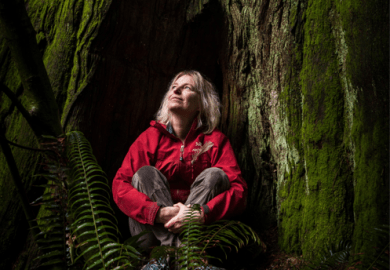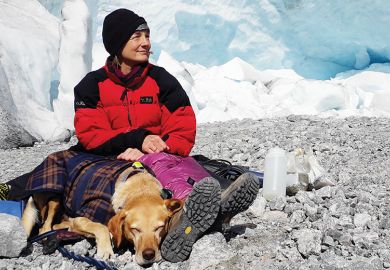We are still living in the midst of the Ice Age, and we should not forget it. Frozen Earth explores the causes and effects of ice ages from as early as 3 billion years ago. Like all science, the study of ice ages is a product of generations of intensive inquiry. Doug Macdougall explores the science of ice ages through the eyes of the individuals who discovered them.
The self-taught Scot James Croll theorised that ice ages stemmed from changes in the Earth's orbit. History has proven him largely correct. The Serbian mathematician Milutin Milankovitch laboured in obscurity, but his calculations of so-called Milankovitch cycles put Croll's orbital theory on a modern footing. Deep-sea cores taken in the 1960s revealed a 100,000-year global cycle of cold and warm over about 400,000 years.
A decade later, researchers showed that the 100,000-year cycle reflects changes in the Earth's orbit, while smaller 43,000-year and 20,000-year cycles mark tilts and wobbles of the rotation axis. All these changes resulted from only small changes in the amount of solar energy received on earth.
This book is unusual because Macdougall discusses all ice ages. Geologists now know of at least four that predate that of the Pleistocene epoch of the past 2.5 million years; 300 million years ago, the world remained cold for 80 million years during the Permo-Carboniferous ice age, with vast areas of the Earth under ice.
Was there, then, a Snowball Earth when the entire globe froze over? The jury is still out. From the earlier ice ages, Macdougall turns to the climatic shifts of the Pleistocene ice age, documented by deep-sea cores and ice cores from Greenland, the Andes, Antarctica and elsewhere. He discusses the impact of the Pleistocene epoch on human evolution, concluding that cold intervals may have shaped evolutionary pathways. But we need to know more before we can understand changes in human diversity in this context.
Macdougall discusses the current warm interglacial period when many of human history's most important events have unfolded, among them the origins of agriculture and urban civilisation. He argues that climate changes such as drought hastened the collapse of Akkadian and Maya civilisations and highlights the close relationship between developments such as the Norse settlement of Greenland, the Medieval Warm Period and the Little Ice Age.
Finally, he asks the big question: are we in an interglacial that is destined to end in another glacial interval, or has climatic forcing by humans ensured that the world will remain warm? Much depends on how long we continue to rely on fossil fuels that discharge carbon dioxide. Eventually, carbon dioxide levels could fall and inexorably the fluctuations in the Earth's orbit could draw us into another glacial episode. Or will this scenario unfold at all? At present, we simply do not know.
Frozen Earth offers a perspective on current debates over anthropogenic global warming and should be required reading for anyone interested in the future of the planet.
Brian Fagan is emeritus professor of anthropology, University of California, Santa Barbara, US, and author of several books on ancient human societies and climate change.
Frozen Earth: The Once and Future Story of Ice Ages
Author - Doug Macdougall
Publisher - University of California Press
Pages - 256
Price - £15.95
ISBN - 0 520 23922 9
Register to continue
Why register?
- Registration is free and only takes a moment
- Once registered, you can read 3 articles a month
- Sign up for our newsletter
Subscribe
Or subscribe for unlimited access to:
- Unlimited access to news, views, insights & reviews
- Digital editions
- Digital access to THE’s university and college rankings analysis
Already registered or a current subscriber?



